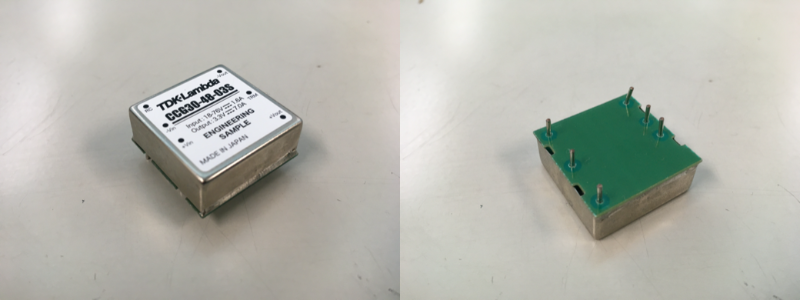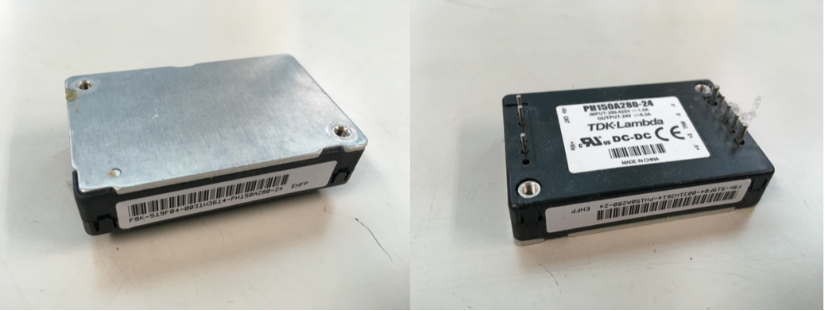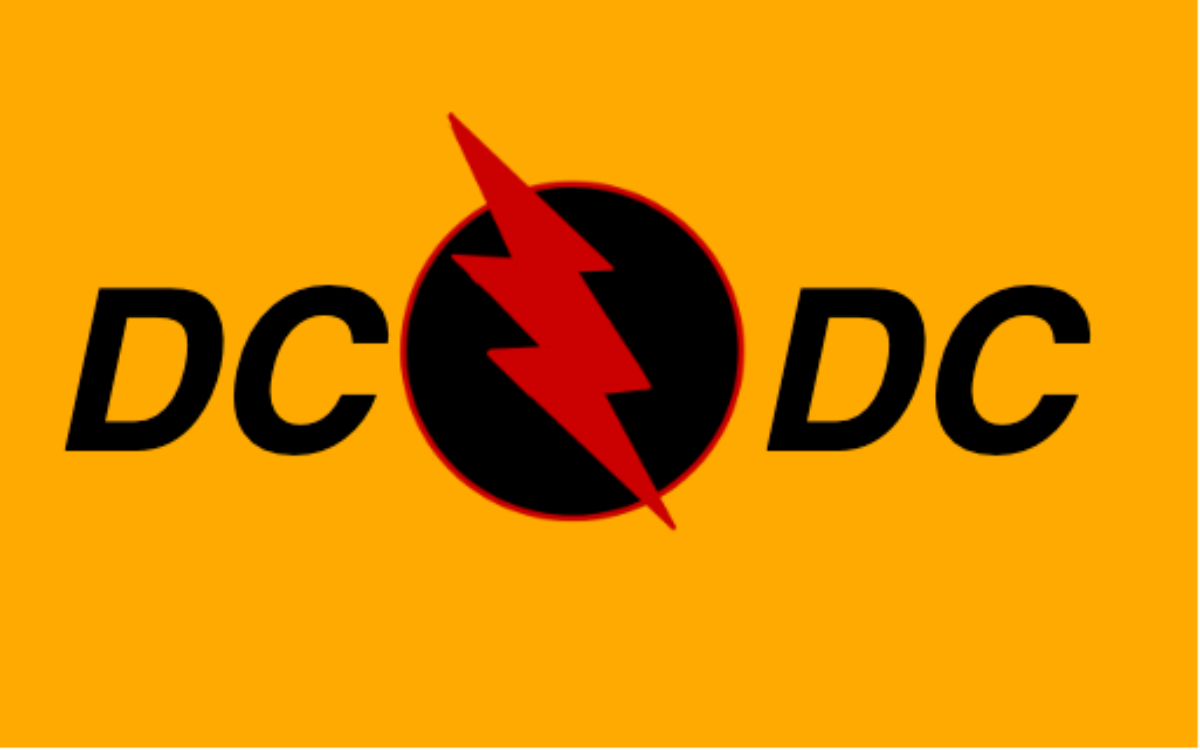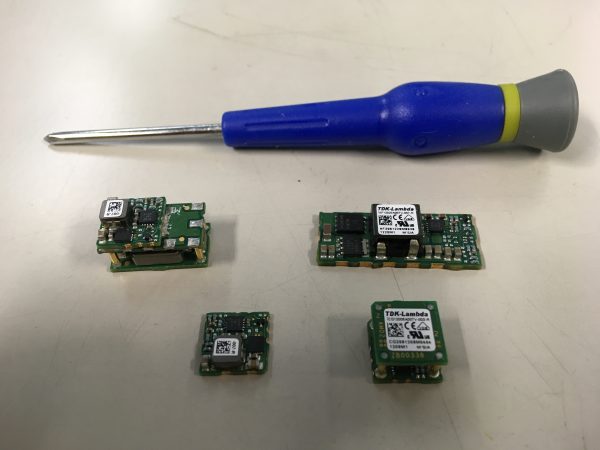DC/DC converter shape
There are several types of DC/DC converters by shape. “Onboard”, “POL”, “power module”, etc. I will explain each of them.
Onboard

Front and back photos of DC / DC converter CCG30
Onboard is a type of DC/DC converter that is mounted directly on the board. DC/DC converters often refer to this type, and various models are available from various manufacturers.
The size notation is not only the onboard type, but the inch notation is the world standard. Since the board type is small, 1×1 inch (one-by-one), 2×1 (two-by-one) inch, and 2×2 (two-by-two) inch are easy to understand. There are many other inch sizes that are not integers. In short, it’s just written in inches.
The DC/DC converter of a domestic power supply manufacturer is the original size in mm notation, but recently it has been released in inch size such as 1×1 which is the world standard. The type in the photo is the CCG series made by TDK-Lambda, which is the world’s smallest class of 1×1 (one-by-one) size at 30W.
Input voltage is DC3.3V, 5V, 12V, 15V, 24V, 48V. Recently, as the number of battery input devices has increased, wide input types such as DC12 to 24V and DC24 to 48V are also on sale. The output voltage is low voltage of DC3.3V, 5V, 12V, 15V where electronic components operate. It has a capacity of about 1.5W to 80W and does not use an electrolytic capacitor, which is a long-life component, so it has no electric capacitor life.
There are two output voltages, single output and two outputs. The single output is generally 3.3V, 5V, 12V, 15V, and the two outputs are ± 12V, ± 15V.
POL
A highly efficient, compact, high-speed responsive non-isolated DC/DC converter that converts an intermediate voltage such as 48V to the low voltage required by electronic components such as ICs.
Input voltages are available in relatively high input voltage types from 9 to 50V and low voltage input types from 4 to 14V. The output voltage of the high input voltage type can be changed from 3 to 40V, and the output voltage of the low voltage input type can be changed by about 0.6 to 5V. The current value is generally up to 30A, but there is also BRFS150 made by Cosel that can carry a large current of 150A.
Power module

PH150A280-24の裏表の写真
The power module is also soldered directly to the pins on the board. For heat dissipation, attach a heat dissipation fin to the aluminum base plate on the opposite side of the pin and blow the wind, or make it adhere to the metal part of the device body to dissipate heat.
The standard unit of power module is called “brick”.
Brick means brick, and full brick is about 117mm in length x 61mm in width x 117mm in height. The 1/2, 1/4, 1/8, and 1/16 sizes are called Half Brick, Quarter Brick, Ace Brick, and Sixty Brick, respectively. The power module in the photo is a 1/4 brick. This brick size is not exact and may vary slightly depending on the model.
The power module cannot be used alone, and peripheral circuit design is required. A power module is, so to speak, a package of a part of a power supply circuit. Considering that users design power supplies with discrete parts, using power modules makes circuit design easier and saves design man-hours. It has a capacity of up to 700W and various options are available.

